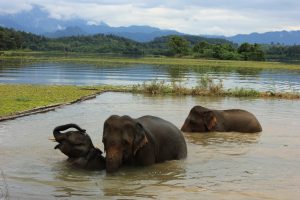
By: Courtney Ridgel
Day 1: The Sayaboury Elephant Conservation Center, located in rural Sayaboury, Laos, was hands-down one of the most beautiful places that I have ever been. My journey there began when I piled in the Center’s van at the Post Office in Luang Prabang, and met the other travelers who would also be visiting. Coffee and croissant in hand (which are phenomenal in Laos), I sat comfortably and watched for 2-3 hours as the stunning countryside rolled past – steep verdant hillsides with wild jungle interspersed with teak and rubber tree plantations, rugged cliffs, rice terraces snaking up riverbeds, small wooden villages and large brown rivers. When we arrived in Sayaboury, we were greeted by several local villagers who helped us with our bags onto a small ferry, which carried across Nam Tien Lake.
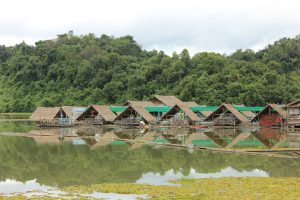

When we arrived, we were met by Lar, our guide for the duration of our stay, and he took us to check into our traditional Laotian stilted bungalows, before we all sat down together for a traditional Laotian lunch. The Center is really a small village – the mahouts, guides, gardeners, farmers, cooks, veterinarians, biologists, cleaning staff and boat drivers all have the option of staying in their own small bungalows at the center, or of living in the town of Sayaboury and commuting by motorbike.


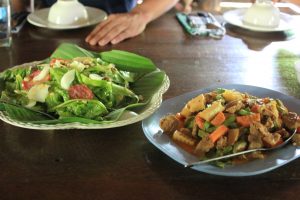
After lunch, Lar led my fellow travelers and I to see Annabelle, the resident biologist at the Elephant Hospital where she explained about caring for elephants, elephant health, and the plight of the Asian Elephant in great detail. There are currently around 400 wild elephants in Laos and around 450 domesticated elephants. However, logging with elephants was recently banned by the Laotian government. While this move was made to protect elephants from the hard labor and potential abuse, many of the mahouts who own the elephants now find themselves in a position where they cannot afford to keep caring for them properly. The elephant hospital at the center is open to any mahout to bring in their elephants, and the center actively works to promote elephant breeding in an effort to protect the aging and dwindling population. We also had the opportunity to visit the Elephant Museum to learn about the history of elephants in Laos, and their symbolic and economic significance.
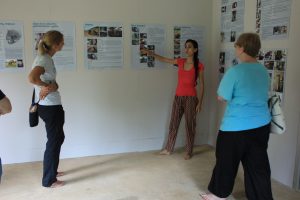
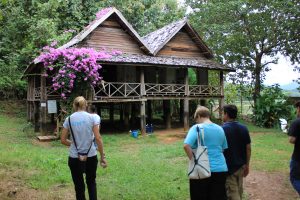
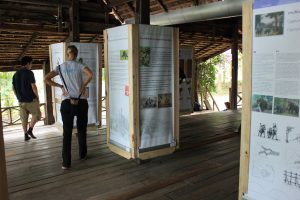
In the late afternoon, the resident mahouts and elephants came down to the edge of the lake for their evening bath and we were able to simply be present in the moment and soak in the beauty of it all. I was amazed that there were no boundaries or fences – between myself and these very large and beautiful creatures, and was quite surprised when one of them came directly out of the water and walked up to greet me.
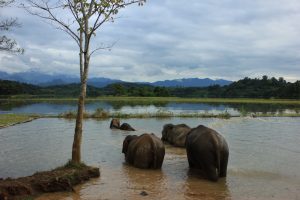
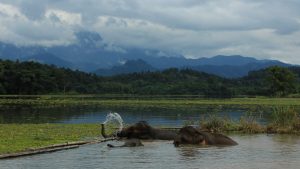
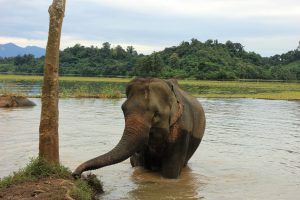
After their bath, we were introduced to each of the elephants and their mahouts, and listened to their life stories – all of the adult elephants had worked hard in careers like logging before arriving at the center. We learned that elephants are traditionally paired with a single mahout for life, and as such, would almost be considered a member of the family. Being a traditional mahout is a dying profession and their skills and wisdom are traditionally passed down orally father to son, with years of training. Mahout children are traditionally raised among elephants. As Laos modernizes and there are fewer and fewer men (never women) choosing to pursue this path in life, many domestic elephants are not being as well-treated.

Clambering up a tall feeding platform, we had the opportunity to feed the elephants sugar cane as a treat. As evening advanced, the mahouts led the elephants back into the jungle for the night, and we settled down for another home-cooked Laotian meal and chatted amongst ourselves. Jozef, the Center’s Sales & Marketing Manager, ate with us and answered our many questions.

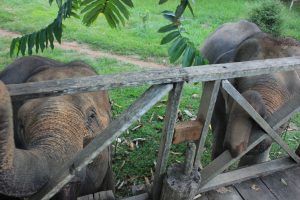
There are kayaks available for guests who would like to paddle out on the lake, but I enjoyed meandering about the center and taking in the stunning views, before settling into my hammock with a book on the porch of my bungalow.


Day 2: After breakfast the next morning, we headed into the jungle, hiking up and down the steep and muddy trail to reach a different area of the lake where the elephants bathe in the morning. They splashed themselves with the water, so that it would seep into the creases in their skin and keep them cool through the hottest part of the day as they forage in the jungle. After the elephants felt satisfied, they meandered out of the water to interact with us. (I kept forgetting to duck out of the way of the flapping ears!)
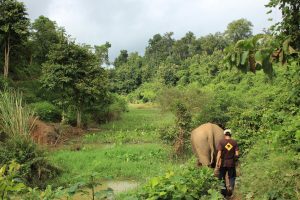
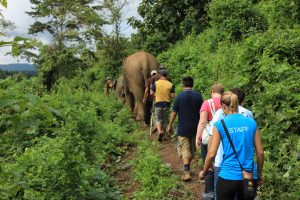
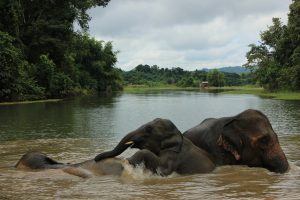
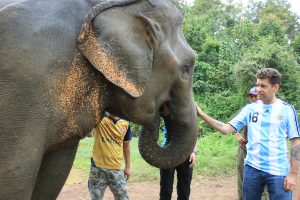
Some of the elephants head to ‘Enrichment’ where they solve puzzles and are rewarded with treats to keep their minds sharp and inquisitive, as elephants can grow unhappy and depressed when bored. The rest were led to ‘Socialization’ – a large paddock of natural jungle where the elephants are allowed to roam freely and forage as a herd. We hiked up the hill to watch from above from a series of observation platforms, and Annabelle joined us to explain the various elephant behaviors we observed. She also explained the importance of elephants to the Laotian ecosystem – elephants are naturally quite destructive, clearing paths through the forest which allows for new growth, and they have inefficient digestive systems, so as they forage and travel, their feces replants the seeds of many native plants.
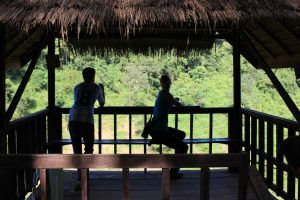
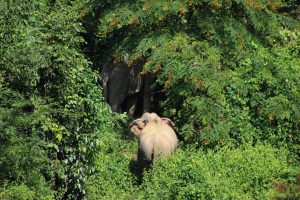

With reluctance that we eventually headed back to the water’s edge, but were rewarded when we had the chance to watch the mothers with young babies come for a bath. The little ones splashed and played in the mud before their mothers and their mahouts led them back into the forest. We settled down for a delicious Laotian picnic lunch, before the ferry carried us back around the peninsula to the Center where we checked out of our bungalows (some travelers stay longer…), bid Lar farewell, and rode the ferry back to the road for the scenic drive back to Luang Prabang.
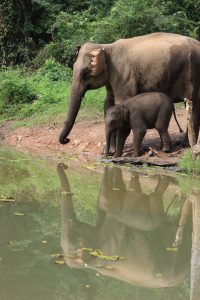
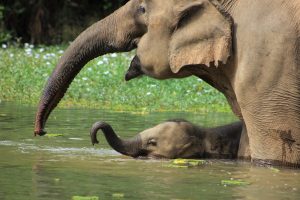
Spending time with elephants in their natural habitat, watching them interact and nurture their babies is an incredible experience all by itself, but learning about their importance in the local ecosystem, and their tenuous hold on long-term survival as a species, was eye-opening. Equally meaningful to me, was getting to learn about the vast knowledge the mahouts have and to witness their unique bond with these beautiful beasts. Elephants are sacred creatures in Laos and I can certainly see why. Visiting the Elephant Conservation Center felt like getting to star in my own Discovery Channel adventure, and my time in Sayaboury will always hold a special place in my heart.

You too can visit the elephants in their natural jungle home! Click this link to see the two day Elephant Conservation Center Discovery Tour, which can be combined with any larger itinerary.


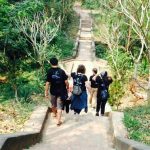
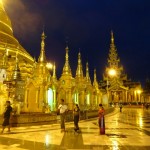
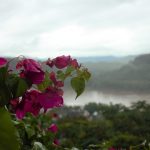
thanks a lot. Appreciate that kind of information. – Heading to spend at least 2 nights in that center at Nam Tien lake which seems it improved since your posting of Nicole Long (Laos Country Director resp. Andrea) in March 28, 2012.
All best wishes 4 New Year